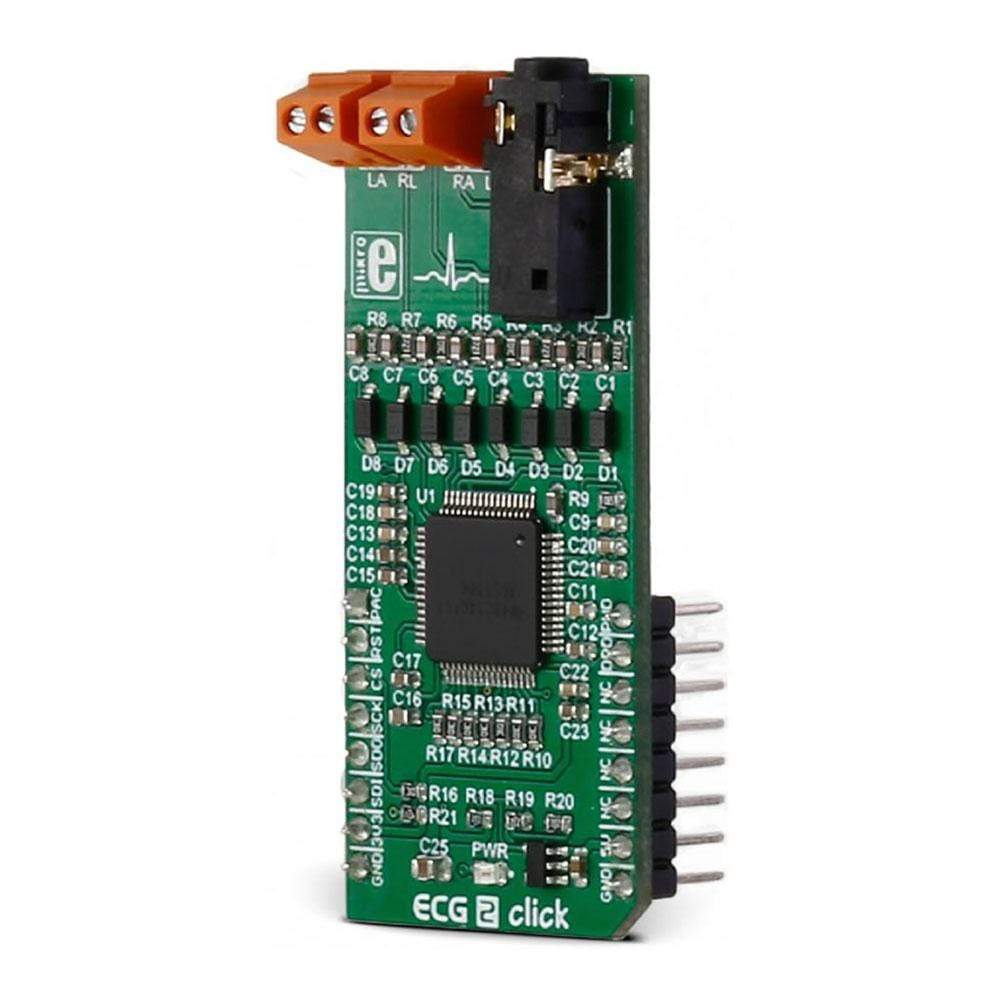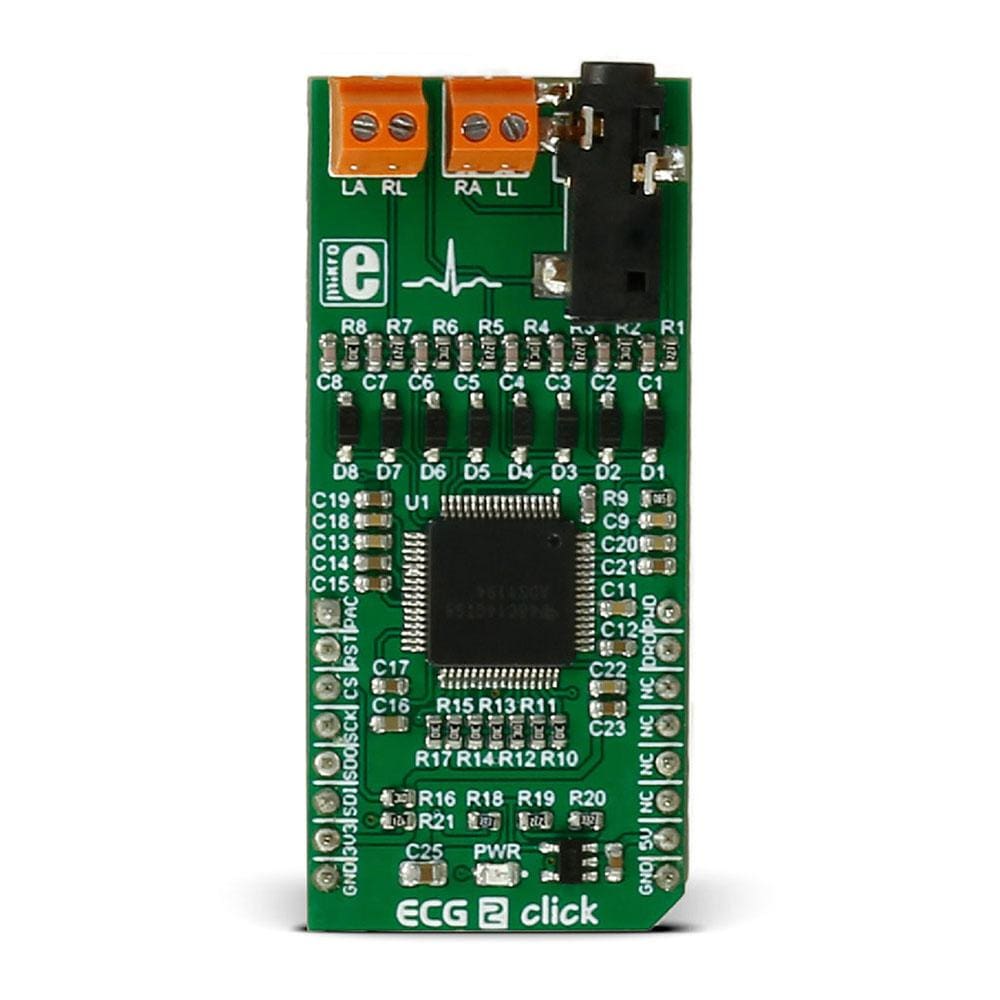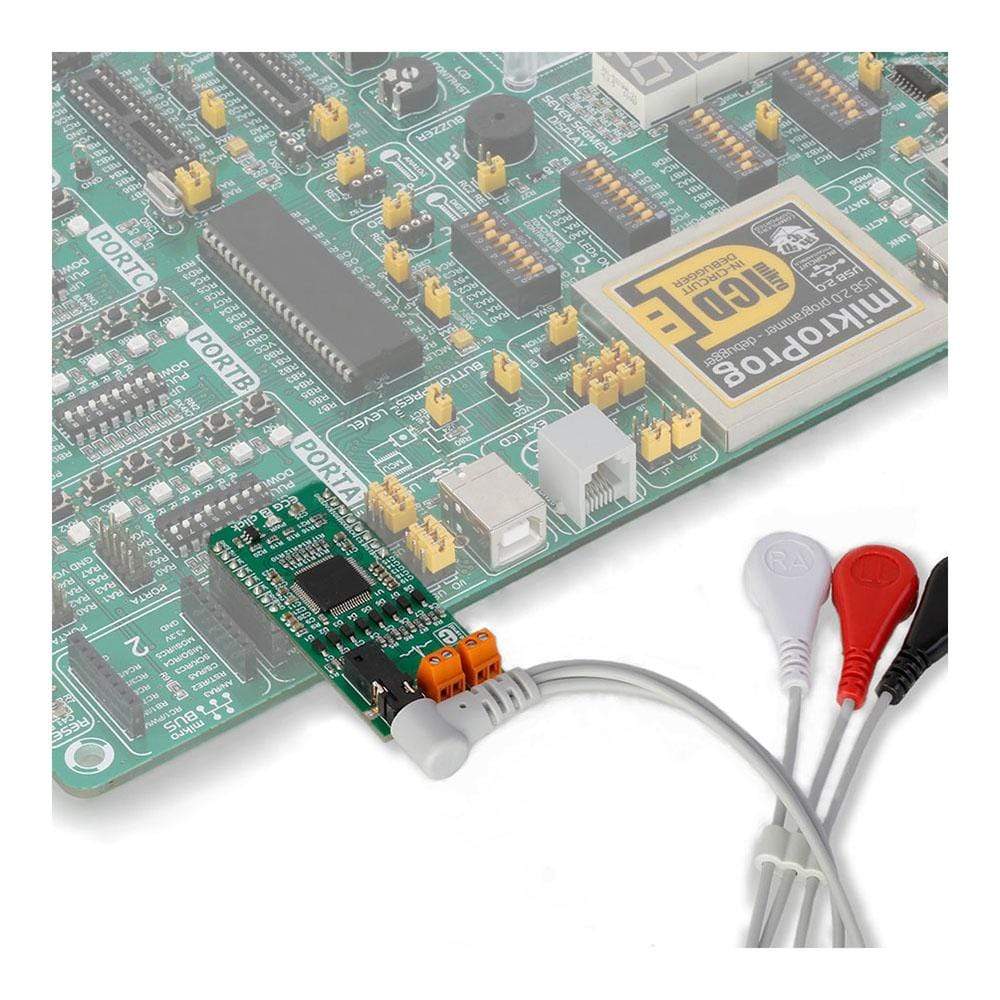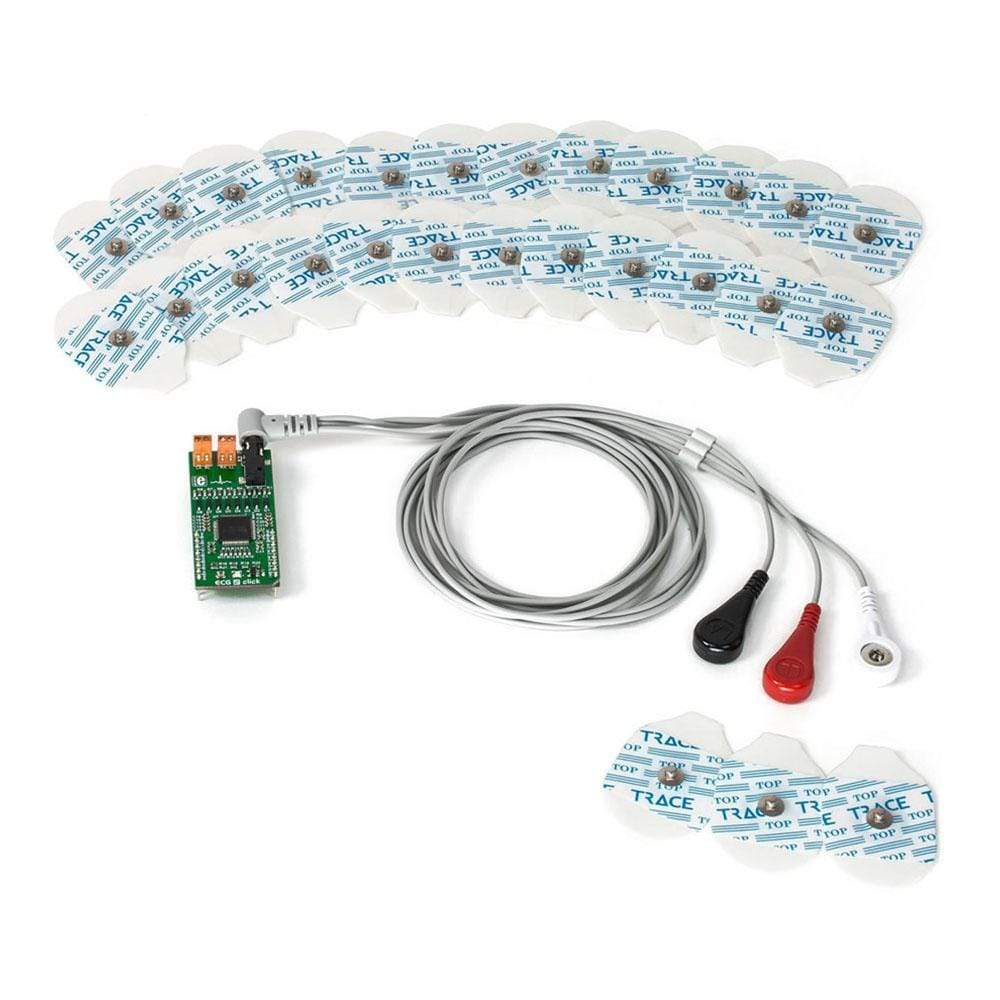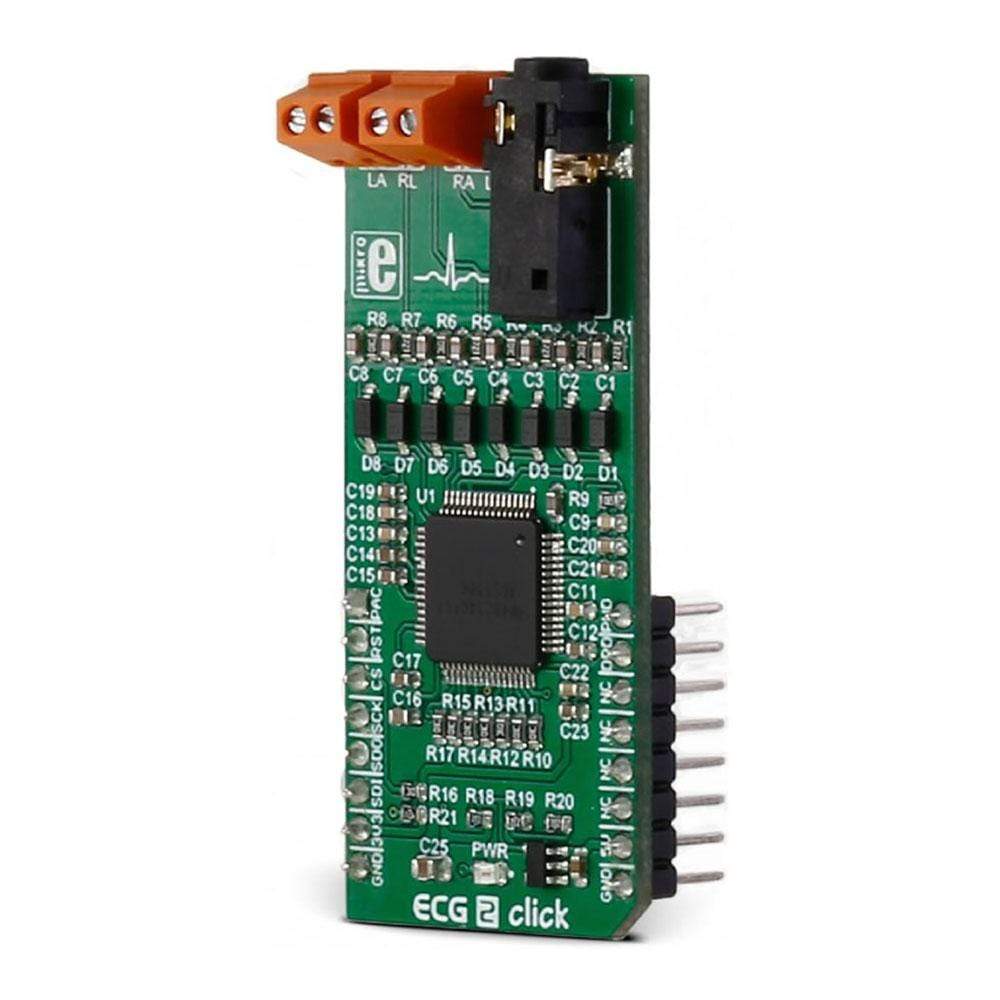
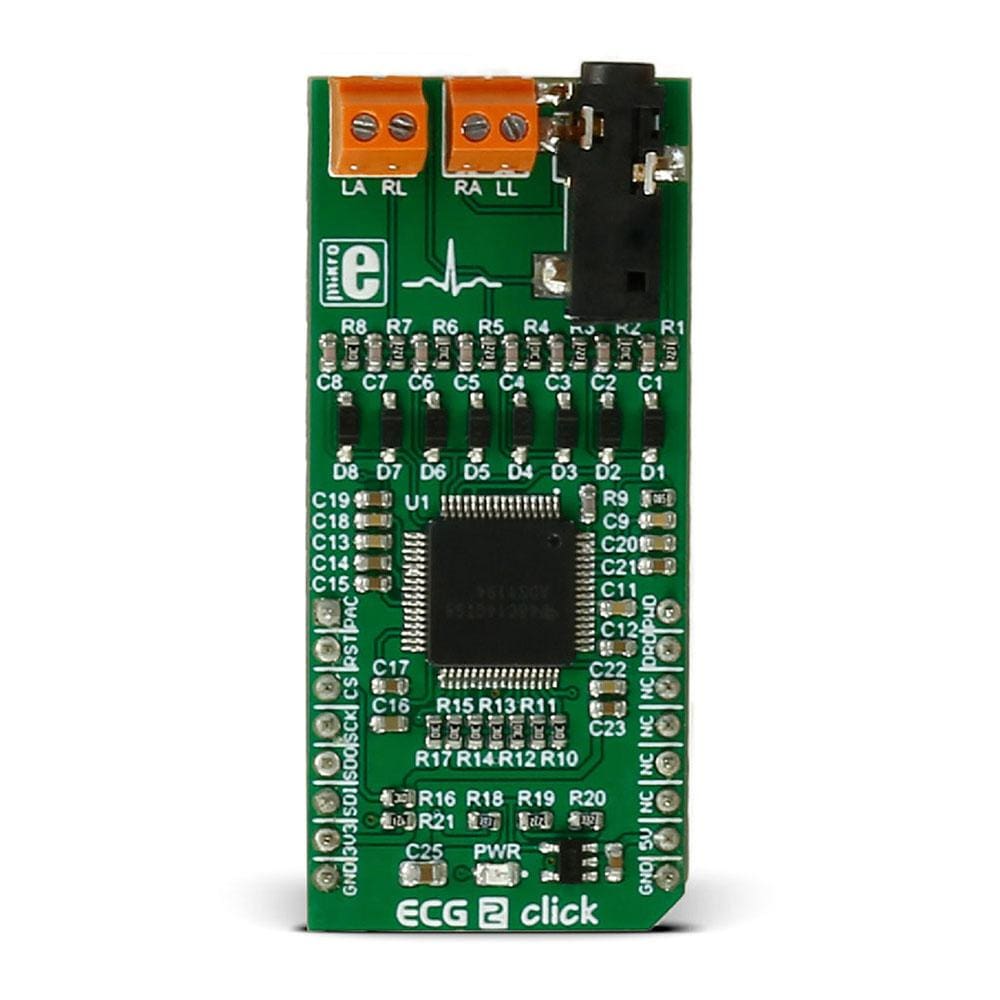
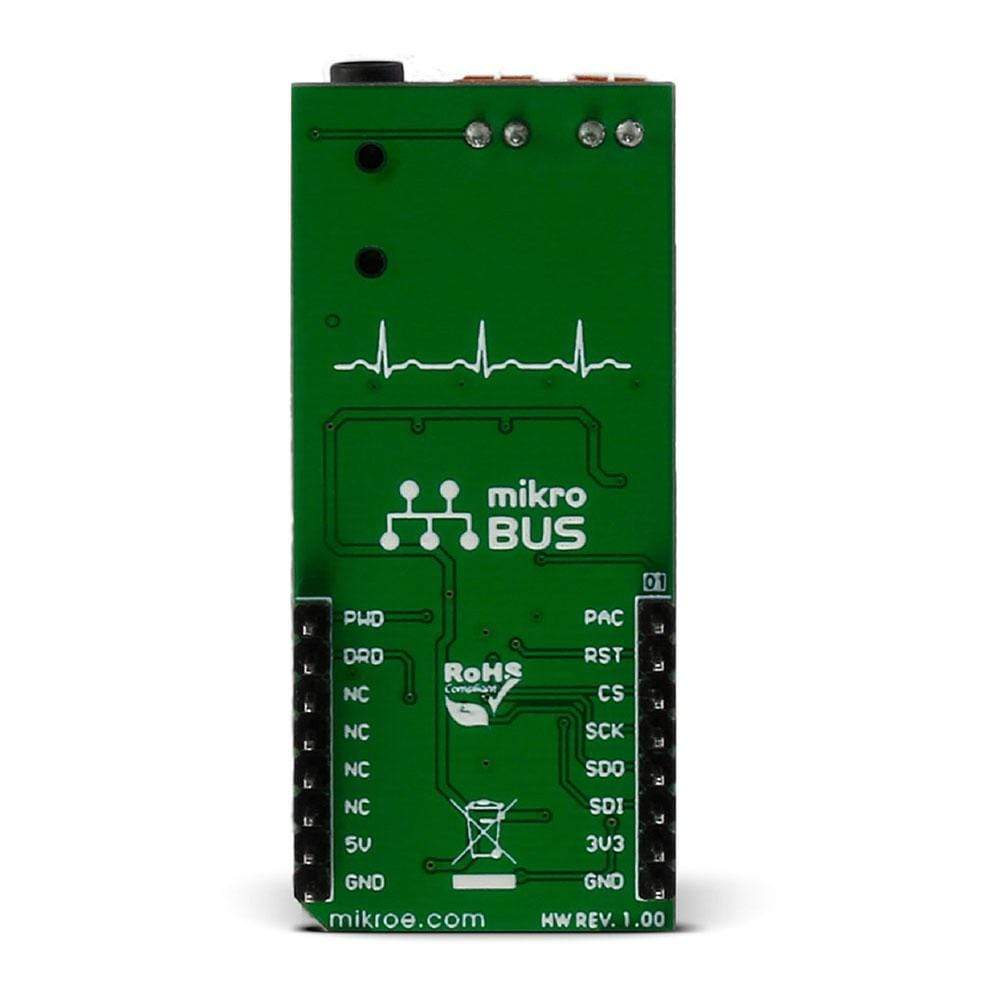
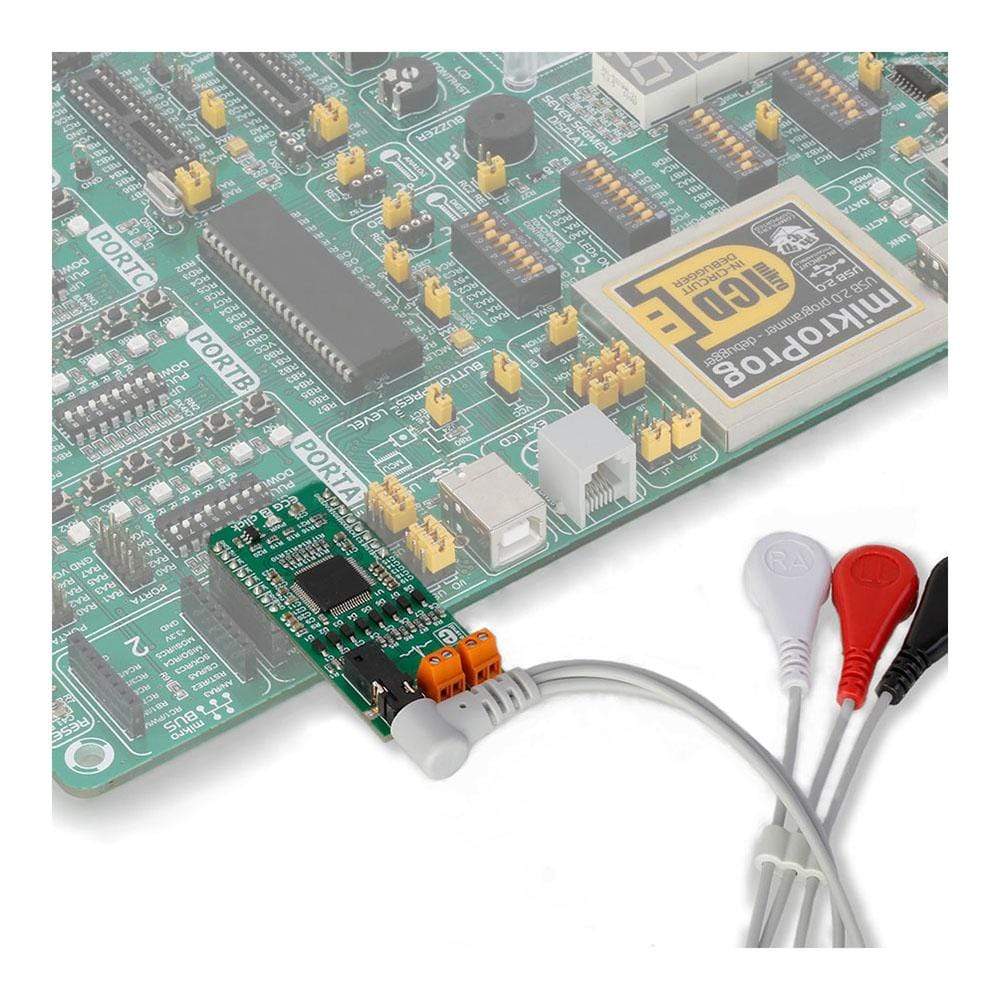
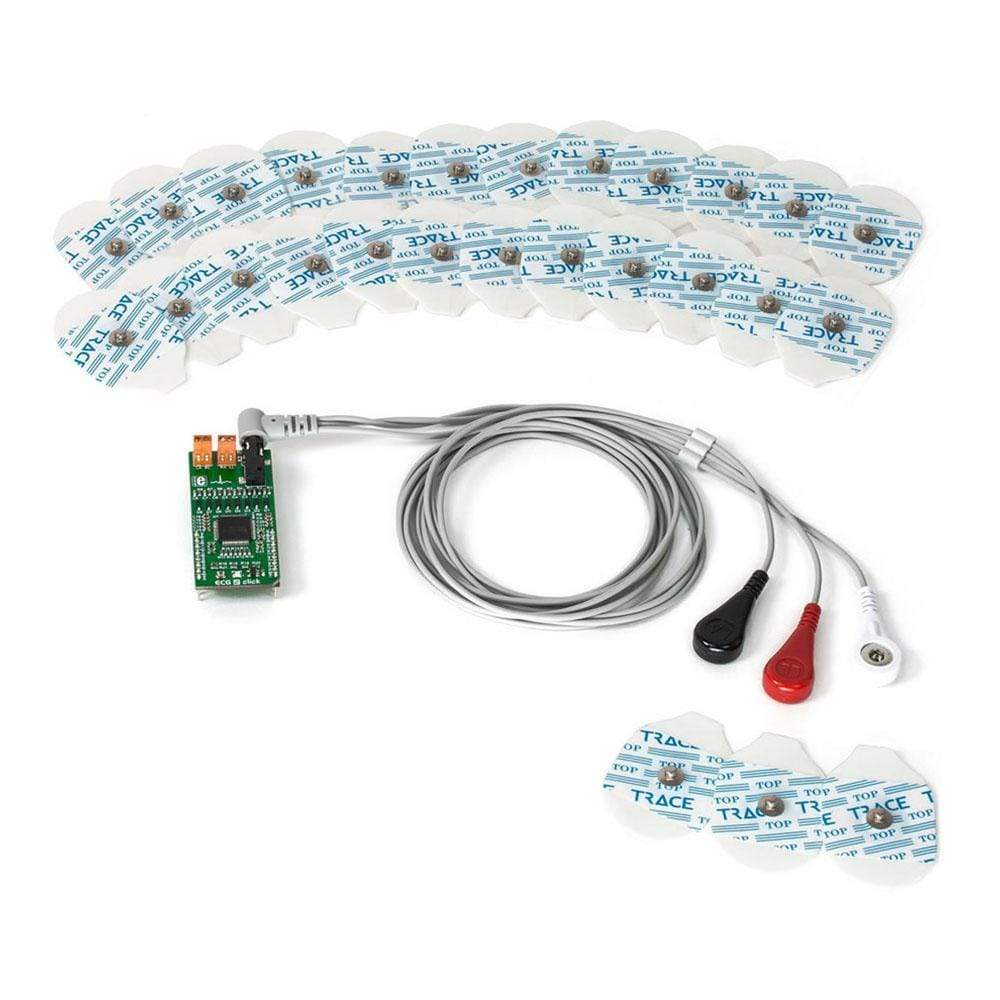
Overview
Track the patterns of your beating heart with the ECG 2 Click Board™. The ECG 2 Click Board™ contains ADS1194 16-bit delta-sigma analogue-to-digital converters from Texas Instruments, a built-in programmable gain amplifier (PGA), an internal reference, and an onboard oscillator.
The ECG 2 Click Board™ communicates with the target MCU over SPI and the following MikroBUS pins: PWM, AN and INT. ECG 2 Click Board™ runs on a 3.3V and 5V power supply.
Downloads
Track the patterns of your beating heart with the ECG 2 Click Board™. The ECG 2 Click Board™ contains ADS1194 16-bit delta-sigma analog-to-digital converters from Texas Instruments, a built-in programmable gain amplifier (PGA), an internal reference, and an onboard oscillator.
The ECG 2 Click Board™ communicates with the target MCU over SPI and the following mikroBUS pins: PWM, AN and INT. ECG 2 click runs on 3.3V and 5V power supply.
Note: We offer cables for three electrodes measuring (using 3.5mm jack onboard)
Setup Guide – How To Use The ECG 2 Click Board™
You will need the following things to start recording your ECG:
- 1.ECG 2 Click Board™
- 2.Cable
- 3.Disposable adhesive electrode pads (sold in packs of 30)
Of course, you will also need a target board with an MCU (preferably powered from an external battery).
There are two available measuring options:
1. For 3 wire measurement, a 3.5mm jack is used.
You can connect the click to a person using three electrodes placed on the left arm, right arm and the left side of the abdomen (below the heart) or alternatively on the left leg.
We offer cables and electrodes that are marked (left leg (LL) – red, left arm (LA) – black, right arm (RA) – white).
2. For 4 wire measurement, screw terminals are used.
ECG 2 click can also be connected by 4 electrodes that are placed on both arms and legs.
MIKROPLOT APPLICATION
MikroPlot is a free data visualization tool (Windows) that can be used to generate an ECG.
The graph is generated from data sent from the MCU (ADC values from ECG click input + time stamp). A UART-USB connection is required.
See the learn.mikroe.com article for more information.
POWER SUPPLY
The ECG 2 Click Board™ uses both 3.3V and 5V power supply — 3.3V is used as digital power supply and 5V is used for analog power supply (via linear regulator which gives stabilized 3V at output).
OVERVOLTAGE AND OVERCURRENT PROTECTION
OverVoltage and OverCurrent protection is realized over 22k resistors and diodes.
APPLICATION
Measures the electrical activity of a beating heart through electrodes taped to the skin.
DISCLAIMER: The ECG 2 Click Board™ is a prototyping tool, not a medical-grade device. Do not use it to diagnose patients.
SPECIFICATIONS
| Type | Biometrics,ECG |
| Applications | Measures the electrical activity of a beating heart through electrodes taped to the skin |
| On-board modules | ADS1194 16-bit delta-sigma analog-to-digital converters |
| Key Features | ADS1194 IC, Onboard 3.5mm jack, Mikro Plot application, SPI interface, 3.3V and 5V power supply |
| Interface | GPIO,SPI |
| Compatibility | mikroBUS |
| Click board size | L (57.15 x 25.4 mm) |
| Input Voltage | 3.3V,5V |
PINOUT DIAGRAM
This table shows how the pinout of the ECG 2 Click Board™ corresponds to the pinout on the mikroBUS™ socket (the latter shown in the two middle columns).
| Notes | Pin |  |
Pin | Notes | |||
|---|---|---|---|---|---|---|---|
| Test Pace Out | PAC | 1 | AN | PWM | 16 | PWD | Power Down |
| System reset | RESET | 2 | RST | INT | 15 | DRD | Data Ready |
| SPI chip select | CS | 3 | CS | RX | 14 | NC | |
| SPI clock | SCLK | 4 | SCK | TX | 13 | NC | |
| SPI data out | DOUT | 5 | MISO | SCL | 12 | NC | |
| SPI data in | DIN | 6 | MOSI | SDA | 11 | NC | |
| Power supply | +3.3V | 7 | 3.3V | 5V | 10 | +5V | Power supply |
| Ground | GND | 8 | GND | GND | 9 | GND | Ground |
| General Information | |
|---|---|
Part Number (SKU) |
MIKROE-2507
|
Manufacturer |
|
| Physical and Mechanical | |
Weight |
0.022 kg
|
| Other | |
Country of Origin |
|
HS Code Customs Tariff code
|
|
EAN |
8606015079684
|
Warranty |
|
Frequently Asked Questions
Have a Question?
Be the first to ask a question about this.

